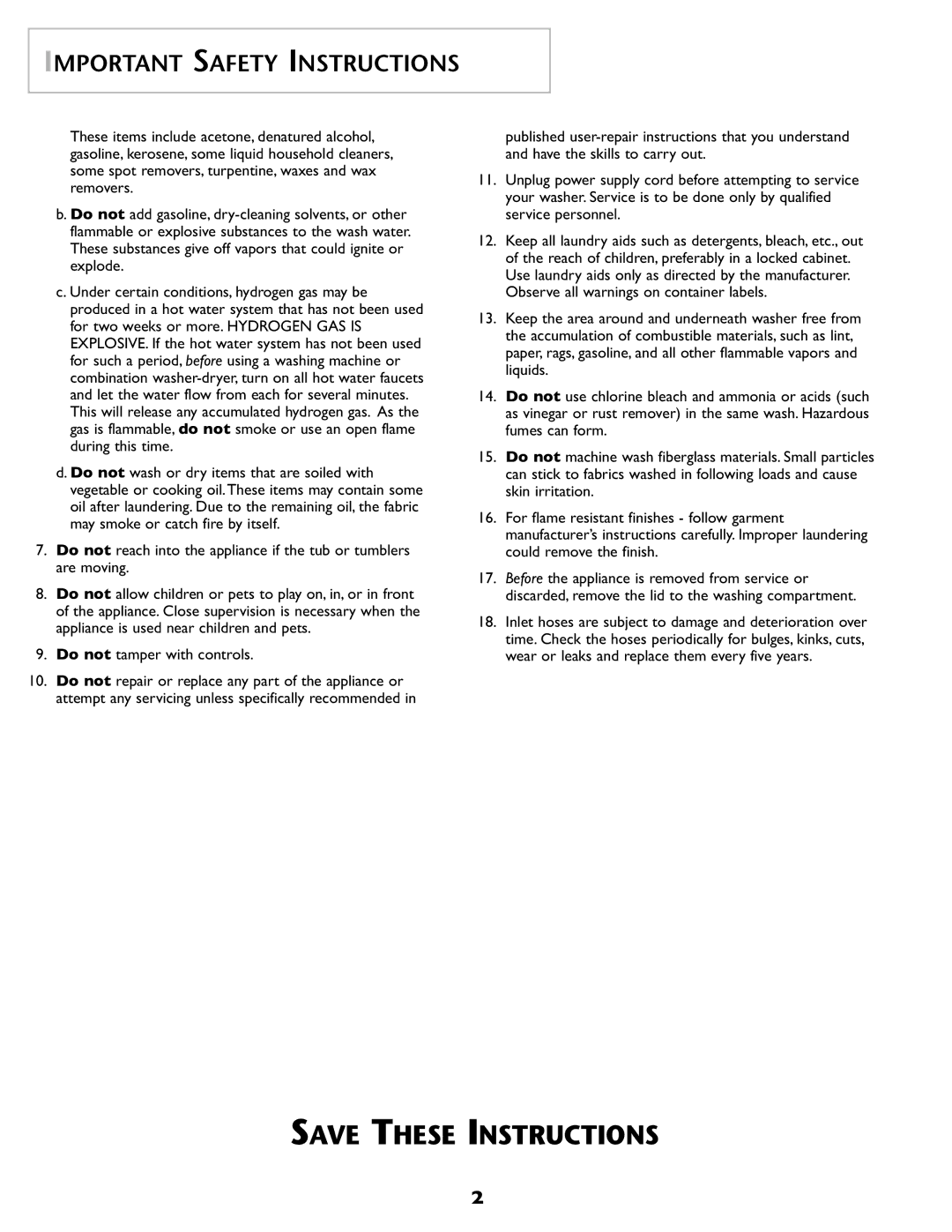
IMPORTANT SAFETY INSTRUCTIONS
These items include acetone, denatured alcohol, gasoline, kerosene, some liquid household cleaners, some spot removers, turpentine, waxes and wax removers.
b. Do not add gasoline,
c. Under certain conditions, hydrogen gas may be produced in a hot water system that has not been used for two weeks or more. HYDROGEN GAS IS EXPLOSIVE. If the hot water system has not been used for such a period, before using a washing machine or combination
d. Do not wash or dry items that are soiled with vegetable or cooking oil.These items may contain some oil after laundering. Due to the remaining oil, the fabric may smoke or catch fire by itself.
7. Do not reach into the appliance if the tub or tumblers are moving.
8. Do not allow children or pets to play on, in, or in front of the appliance. Close supervision is necessary when the appliance is used near children and pets.
9. Do not tamper with controls.
10. Do not repair or replace any part of the appliance or attempt any servicing unless specifically recommended in
published
11. Unplug power supply cord before attempting to service
your washer. Service is to be done only by qualified service personnel.
12. Keep all laundry aids such as detergents, bleach, etc., out of the reach of children, preferably in a locked cabinet. Use laundry aids only as directed by the manufacturer. Observe all warnings on container labels.
13. Keep the area around and underneath washer free from the accumulation of combustible materials, such as lint, paper, rags, gasoline, and all other flammable vapors and liquids.
14. Do not use chlorine bleach and ammonia or acids (such as vinegar or rust remover) in the same wash. Hazardous fumes can form.
15. Do not machine wash fiberglass materials. Small particles can stick to fabrics washed in following loads and cause skin irritation.
16. For flame resistant finishes - follow garment manufacturer’s instructions carefully. Improper laundering could remove the finish.
17. Before the appliance is removed from service or discarded, remove the lid to the washing compartment.
18. Inlet hoses are subject to damage and deterioration over time. Check the hoses periodically for bulges, kinks, cuts, wear or leaks and replace them every five years.
SAVE THESE INSTRUCTIONS
2
